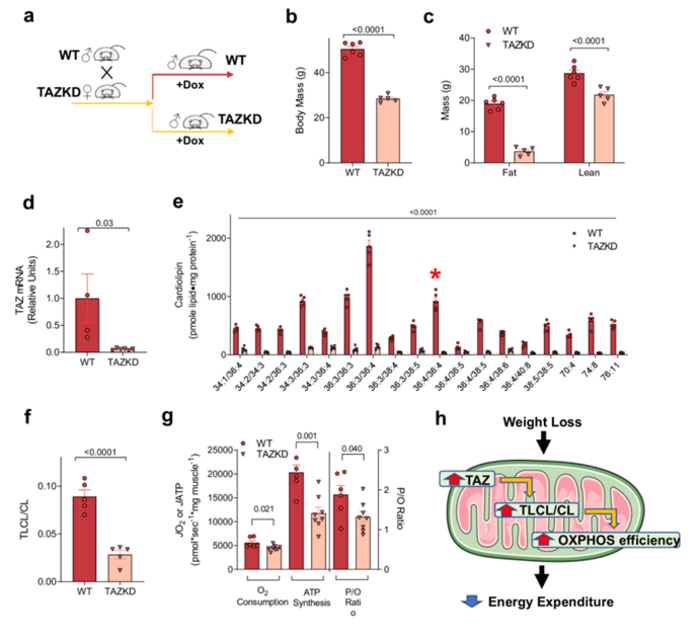For weight-loss individuals, weight regain is a common problem. Numerous studies have revealed that weight loss in obese people leads to a reduction in whole-body energy expenditure. This reduction in energy expenditure is disproportionate throughout tissues, called energetic mismatch that mainly arises from lean tissue, thereby increasing the risk of weight regain.

TLCL deficiency reduces OXPHOS efficiency. Image Credit: Patrick J Ferrara, Marisa J Lang, Jordan M Johnson, Shinya Watanabe, Kelsey L McLaughlin, J Alan Maschek, Anthony R P Verkerke, Piyarat Siripoksup, Amandine Chaix, James E Cox, Kelsey H Fisher-Wellman, Katsuhiko Funai.
Even though this phenomenon has been found long back, and has been proposed that weight loss might change skeletal muscle mitochondrial respiration, the mechanisms are not completely understood and there is a lack of direct evidence.
A study was published by Professor Katsuhiko Funai at the University of Utah in April 2023 in Life Metabolism. Funai and colleagues identified that during weight loss in overweighing mice, the efficacy of skeletal muscle mitochondrial oxidative phosphorylation augmented, which led to a reduction in energy expenditure across the body, thereby contributing to weight loss rebound.
Particularly, obese mice were provided with dietary interventions to shed weight after a combination of high-resolution respirometry and fluorometry measurements. Besides, alterations in mitochondrial proteomes, mitochondrial energy metabolism, and mitochondrial lipidomes were investigated in weight-loss mice. The outcomes revealed that there was no considerable change in respiratory chain supercomplex formation or mitochondrial proteomes in the skeletal muscle of weight-loss mice; however, oxidative phosphorylation efficiency increased largely.
Ultimately, by examining the skeletal muscle’s lipidome in weight-loss mice, the authors identified that weight loss expedited the remodeling of mitochondrial cardiolipin (CL) acyl-chains to upsurge tetralinoleoyl CL (TLCL) content—which are a species of lipids that are known to be functionally important for the respiratory enzymes.
Further research revealed knocking down CL acyltransferase tafazzin decreased TLCL levels along with skeletal muscle oxidative phosphorylation levels, thus letting mice avoid diet-induced weight gain. Overall, the proof proposes that weight loss results in an increase in skeletal muscle mitochondrial energy production efficiency, eventually decreasing energy expenditure across the body.
Source:
Journal reference:
Ferrara, P. J., et al. (2023). Weight loss increases skeletal muscle mitochondrial energy efficiency in obese mice. Life Metabolism. doi.org/10.1093/lifemeta/load014.